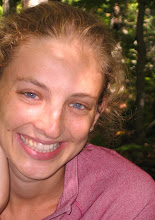 In this first show of Mr. Kentridge’s latest drawings, prints, and stereoscopic images in the U.S., the Marian Goodman Gallery presents a selection of the artist’s work that takes sight, or double vision, as the subject of study. While the exhibit also includes some of Mr. Kentridge’s latest works in watercolor, sculpture, collage prints, and tapestry, the pieces that center on vision are the most exciting and complex in the exhibition.
In this first show of Mr. Kentridge’s latest drawings, prints, and stereoscopic images in the U.S., the Marian Goodman Gallery presents a selection of the artist’s work that takes sight, or double vision, as the subject of study. While the exhibit also includes some of Mr. Kentridge’s latest works in watercolor, sculpture, collage prints, and tapestry, the pieces that center on vision are the most exciting and complex in the exhibition.Mr. Kentridge was born in Johannesburg, South Africa, in 1955 from parents of Jewish European descent who were lawyers famous for defending victims of the apartheid. His family background set him as somewhat of an outsider in respect to other whites of European descent in the context of the Apartheid, and the work he creates reflects the complexity of his perspective. Perspective, in fact, lies at the center of the exhibit as the viewer’s own sight is acted upon through the use of different methods: from double sided mirrors, to stereoscopes, to images that appear distorted unless observed through the right tool at the right angle, or which are constantly transforming.
Transformation also plays a central role in Mr. Kentridge’s works at the Goodman Gallery. In the past, he has created works that deal with animation, using charcoals to create visual narratives that keep on changing as he erases or adds new elements to the narrative. Similarly, we see Kentridge working with animation on his latest piece, What Will Come, an 8-minute filmic anamorphosis in which a cylindrical mirror situated at the center of a round canvas reflects a distorted animation as it develops in circular motion. By presenting as the work the whole machinery (distorted image and mirror working together), the artist confronts the receiver with the choice of looking at either the distorted version of the film or that made “right” by the mirror. In fact, the two coexist, and the viewer’s double observation is only a matter of focusing. Double vision, then, becomes not just about seeing an image twice, but about the complexity of that image coexisting in different forms simultaneously, depending on the focus of the viewer. Furthermore, animation contributes to the possibility of an infinity of perspectives, as the images keep on shifting and changing into new forms.
Similarly to the short anamorphosis, in the series of stereoscopic photogravures in the gallery the viewer’s own action changes the image, making it look three-dimensional and, to some extent, bringing it to life. Yet Mr. Kentridge’s work is not necessarily completed by the viewer’s action, but rather complicated through it. The possibilities offered by distortion go beyond the dualism of right and wrong, or real and distorted, as the image that undergoes distortion in fact becomes clearer with manipulation. Kentridge’s works at the Goodman Gallery go beyond “seeing double,” putting into question the way perception works and the role of human intervention in the act of observing, resonating more with quantum physics than with the playfulness of distorted mirrors found in amusement parks.
http://mariangoodman.com/mg/nyc.html

1 comment:
Please, Mr Kentridge, if you may ever get to read this. Stereo imaging has variously appeared, disappeared and re-appeared since the 1820's. There are a few of us quite devoted to the simple art of convergent free-viewing of reversed placement (right-left instead of left-right) images. No need for intervening devices, optical or mechanical, just the inherent ability of most of us to cross our eyes whilst maintaining focus. As a result any purposefully created pair (photographic or drawn) of stereoscopic images can be seen in three dimensions by simply crossing your eyes therefore to create a third, central image which will be incredibly, beautifully and perfectly in three dimensions. You have the audience out there Mr Kentridge, spread the word.
Post a Comment